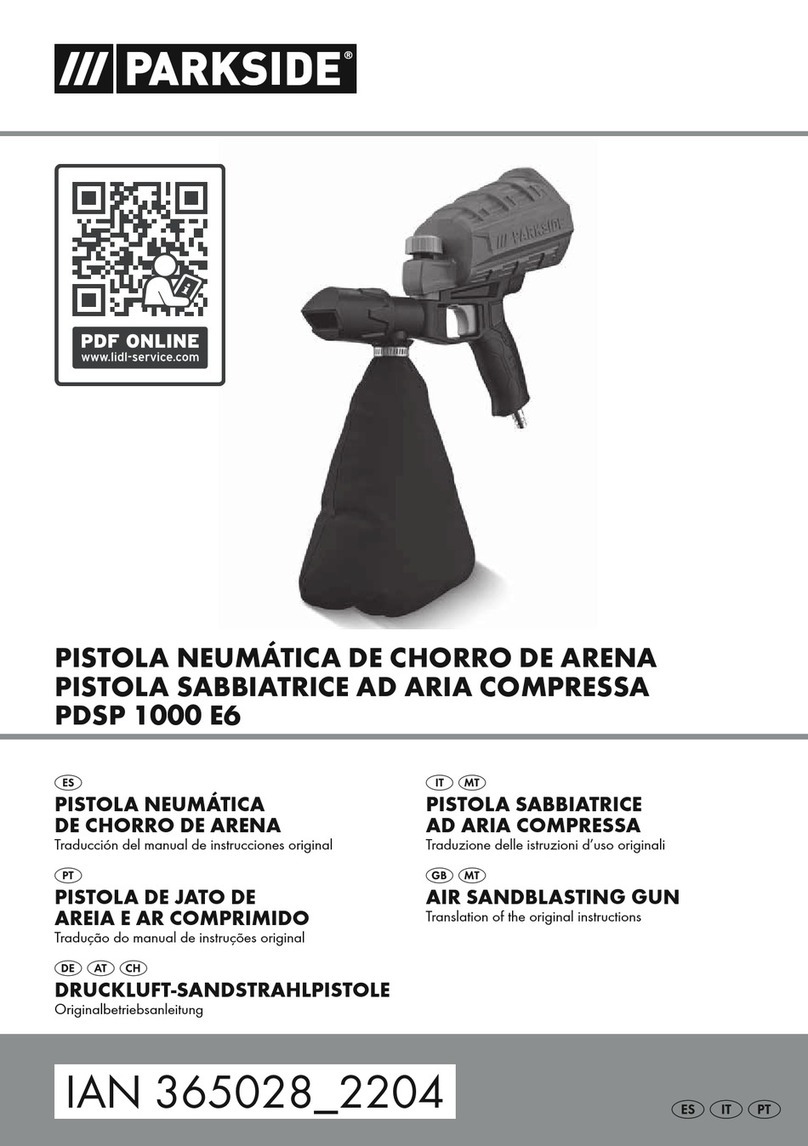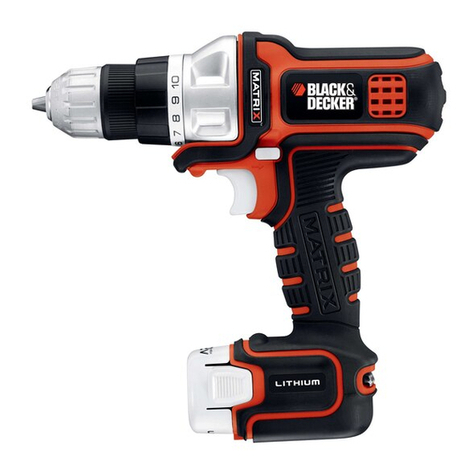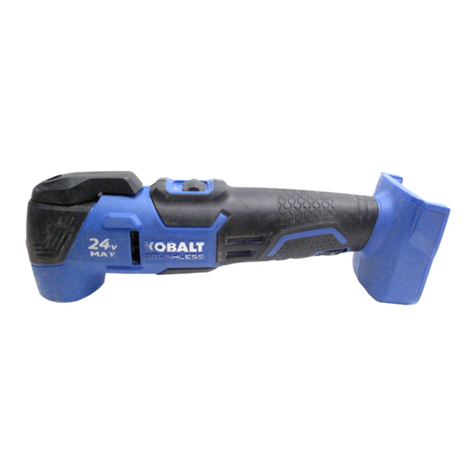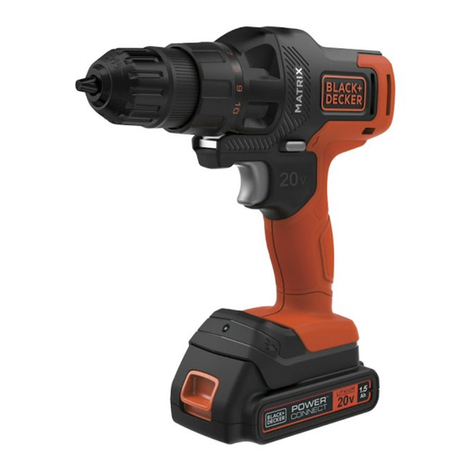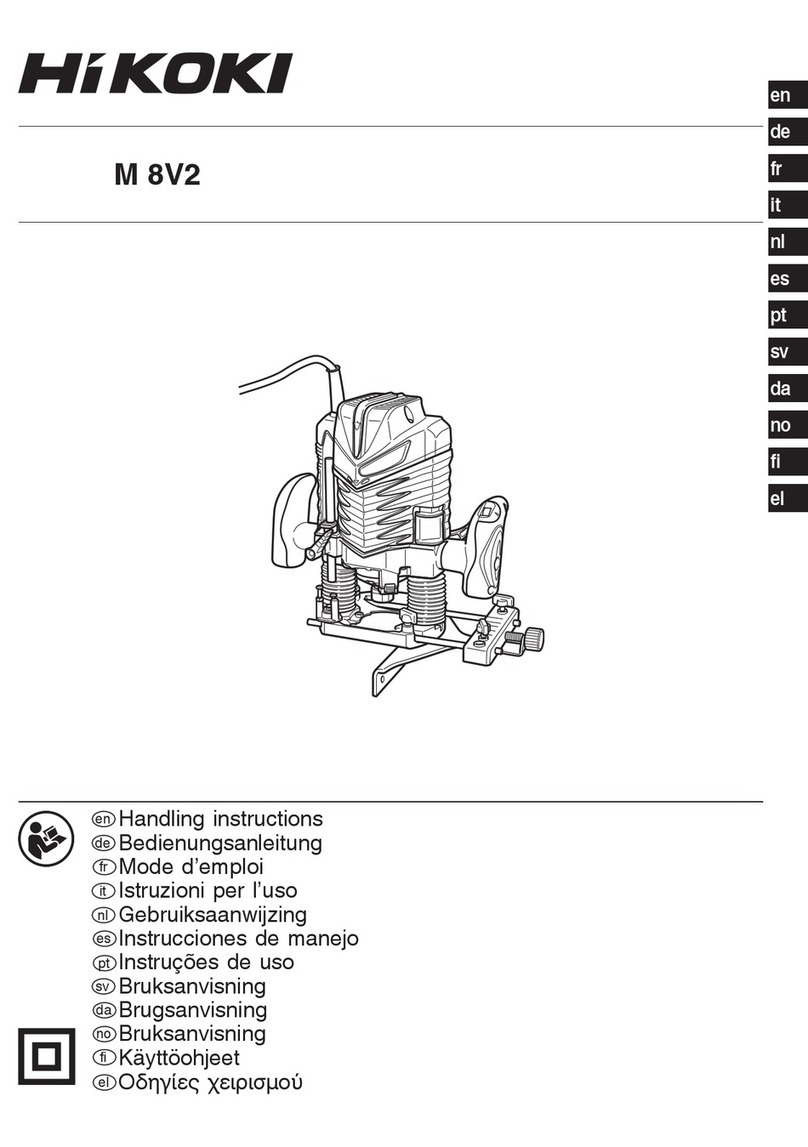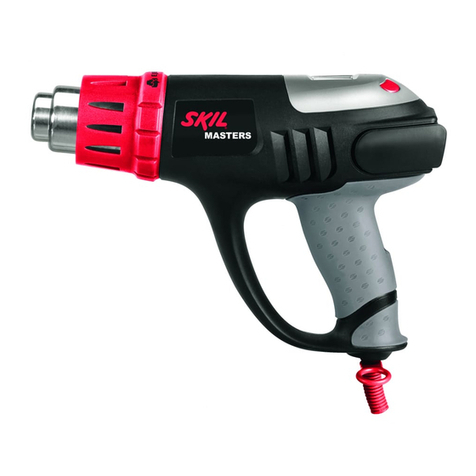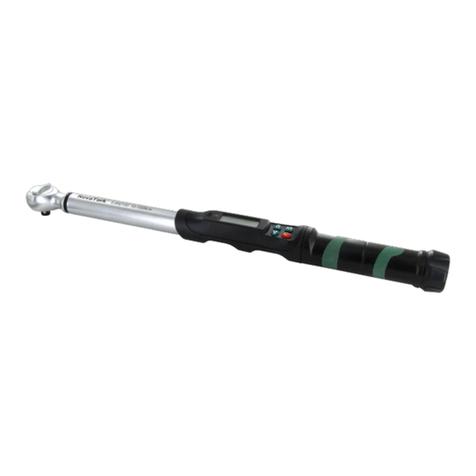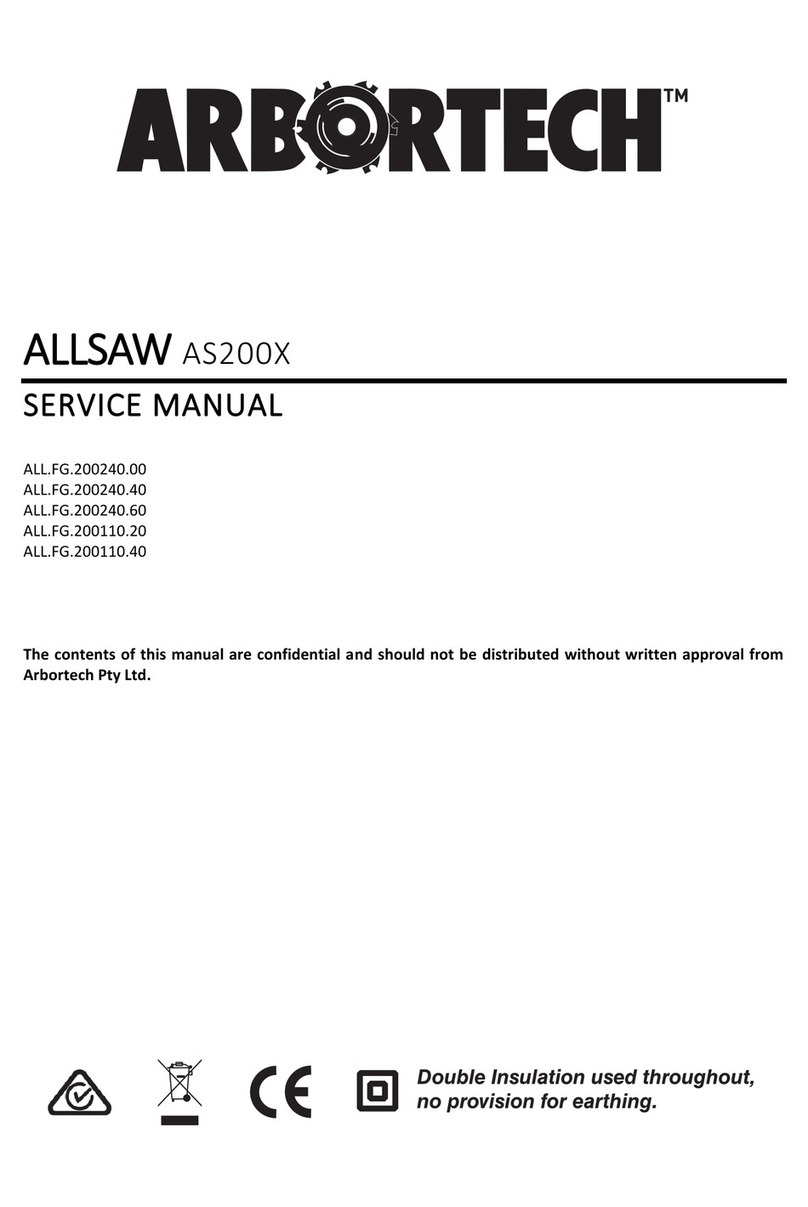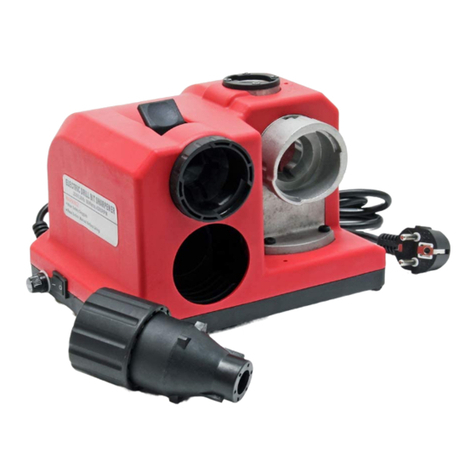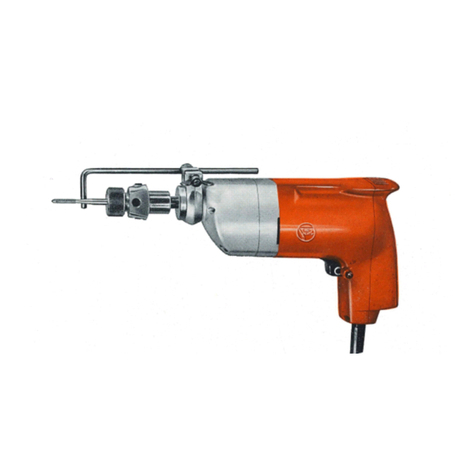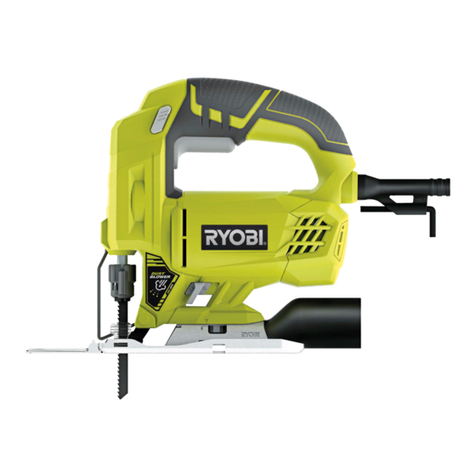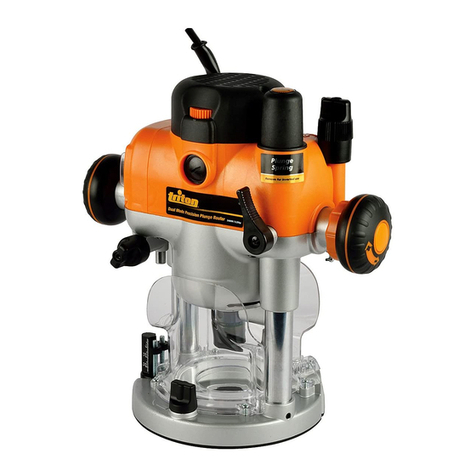Krohn-Hite 4402B User manual

Model 4402B
Ultra-Pure Sinewave Oscillator
1Hz to 110kHz
Typical Distortion of 0.0005%
Serial No. ____________
Operating Manual
15 Jonathan Drive, Unit 4, Brockton, MA 02301 U.S.A.
Tel: (508) 580-1660; Fax: (508) 583-8989
www.krohn-hite.com; info@krohn-hite.com
Copyright © 2006 Krohn-Hite Corporation. All rights reserved. Contents of this publication may not be reproduced
in any form without the written permission of Krohn-Hite Corporation. Printed in USA - 7/06.


TABLE OF CONTENTS
SECTION 1 . . . GENERAL DESCRIPTION ............1-1
1.1 .....INTRODUCTION .....................1-1
1.2 .....SPECIFICATIONS ....................1-1
1.2.1 . . FREQUENCY .......................1-1
1.2.2 . . MAIN OUTPUTS .....................1-2
1.2.3 . . FIXED OUTPUT .....................1-2
1.2.4 . . QUADRATURE OUTPUT................1-3
1.2.5 . . GENERAL .........................1-3
1.2.6 . . OPTIONS ..........................1-3
SECTION 2 . . . OPERATION ..................... 2-1
2.1 .....POWERREQUIREMENTS...............2-1
2.2 .....OPERATINGCONTROLS AND CONNECTORS . 2-2
2.2.1 . . REAR PANEL .......................2-2
2.3 .....OPERATION........................2-3
2.3.1 . . FREQUENCY CONTROL................2-3
2.3.2 . . AMPLITUDE CONTROL ................2-3
2.3.3 . . FLOATING GROUND ..................2-3
SECTION 3 . . . INCOMING ACCEPTANCE ............3-1
3.1 .....INTRODUCTION .....................3-1
3.2 .....LISTOFEQUIPMENTREQUIRED.........3-1
3.3 .....PROCEDURE .......................3-2
3.3.1 . . DC LEVEL ADJUSTMENTS ..............3-2
3.3.2 . . FREQUENCY ACCURACY ..............3-2
3.3.3 . . MAIN OUTPUT AMPLITUDE.............3-2
3.3.4 . . AMPLITUDE FLATNESS................3-3
3.3.5 . . OUTPUT DISTORTION .................3-3
SECTION 4 . . . CIRCUIT DESCRIPTION .............4-1
4.1 .....THEORYOFOPERATION...............4-1
4.2 .....AVCOPERATION ....................4-2
SECTION 5 . . . MAINTENANCE ...................5-1
5.1 .....INTRODUCTION .....................5-1
5.2 .....EQUIPMENTREQUIRED ...............5-1
5.3 .....PRELIMINARYSET-UP ................5-2
5.4 .....PROCEDURE .......................5-2
Table of Contents - i
Table of Contents

SECTION 6 . . . CALIBRATION ...................6-1
6.1 .....INTRODUCTION .....................6-1
6.2 .....EQUIPMENTREQUIRED ...............6-1
6.3 .....TEST PROCEDURE ...................6-2
6.3.1 . . POWER SUPPLY CHECK ...............6-2
6.3.2 . . AVC ADJUSTMENT ...................6-2
6.3.3 . . OUTPUT DC LEVEL ADJUSTMENT ........6-2
6.3.4 . . FREQUENCY CALIBRATION (Bands x1-x1k) . 6-2
6.3.5 . . FREQUENCY CALIBRATION (x10k Band) ....6-3
6.3.6 . . DISTORTION CHECK ..................6-3
SECTION 7 . . . PARTS LIST ..................... 7-1
7.1 .....INTRODUCTION .....................7-1
ii - Table of Contents
Model 4402B Ultra-Pure Sinewave Oscillator

FIGURES
Section 1
Figure 1.1 . Typical Output Distortion ...............1-3
Section 2
Figure2.1.OperatingControlsandConnectors.........2-1
Section 3
Figure 3.1 . Test Set-Up for Measuring Amplitude Flatness. . 3-2
Figure3.2.AmplitudeFlatnessTestSet-Up ...........3-3
Section 4
Figure 4.1 . Model 4402B Simplified Block Diagram ......4-1
Figure4.2.SimplifiedAVCDiagram................4-2
Section 5
Figure 5.1A. . Troubleshooting Flowchart.............5-3
Figure 5.1B . . Troubleshooting Flowchart.............5-4
Table of Contents - iii
Table of Contents

iv - Table of Contents
Model 4402B Ultra-Pure Sinewave Oscillator
Model 4402B Sinewave Oscillator

SECTION 1
GENERAL DESCRIPTION
1.1 INTRODUCTION
The Model 4402B is an ultra-pure sinewave, stable amplitude oscillator designed to meet the needs of to-
day’s high precision 16 to 18 bit A/D converter testing, and audio test and measurement technology.
Covering the frequency range from 1Hz to 110kHz, with precise 3 digit frequency tuning, the 4402B pro-
duces a virtually “distortion-free” (<0.0005%) sinewave for measuring A/D converter accuracy, audio
preamplifier and power amplifier harmonic distortion. With its exceptionally flat response (0.02dB), the
4402B eliminates the need to constantly monitor voltage levels, during frequency response tests.
The 4402B provides a 7Vrms sinewave output, (balanced output, 14Vrms end-to-end), 3.5Vrms into 50
ohms, and has no loss in performance when loaded with a linear 50 ohm load.
A 3-position, push-button attenuator calibrated in 20dB steps, along with the a 30dB vernier, provides a
total dynamic range of 90dB.
Simultaneous fixed and quadrature (90°) outputs are provided. Each output is 7Vrms with 600 ohm
source impedance.
The 4402B is the perfect addition to your present test and/or precision measurement set-up.
1.2 SPECIFICATIONS
The following specifications apply to the Main, Quadrature and Fixed Outputs, except where noted.
1.2.1 FREQUENCY
Range: 1Hz to 110kHz.
Accuracy: ±0.5% of frequency setting.
Control: 2 digits of frequency, calibrated in 1Hz and 0.1Hz steps, with a calibrated vernier providing
continuous coverage between the 0.1Hz steps, plus a 5 decade push-button multiplier with overlapping
ranges.
Stability:
Vs. Time: 0.01% in 1 hour or less.
Vs. Temperature: 0.05%/°C.
Vs. Line: <0.001% for a 10% change in line voltage.
General Description - 1-1
General Description - Section 1

1.2.2 MAIN OUTPUTS
Maximum Amplitude: 7V rms open circuit (balanced output, 14V rms end-to-end); 3.5Vrms; +48dBm
into 50 ohm load (balanced output, 7V rms end-to-end).
Impedance: Constant 50 ohms.
Maximum Current: 75mA rms.
Minimum Amplitude: <0.2mV.
Amplitude Flatness: ±0.02dB, 1Hz to 110kHz.
Amplitude Stability:
Vs. Time: 0.01% in 1 hour or less.
Vs. Temperature: 0.05%/°C.
Vs. Line: <0.001% for a 10% change in line voltage.
Amplitude Control: A 4-position push-button attenuator calibrated in 20dB steps from 0dB to –60dB,
Accuracy, ±0.25dB/20dB step; Volts rms control with greater than 30dB of coverage calibrated in volts.
Accuracy: ±20% of setting.
Main Output Distortion:
Frequency Distortion % Distortion (dB)
1Hz to 10kHz <0.0005 –106
10kHz to 20kHz <0.0018 –95
20kHz to 50kHz <0.0056 –85
50kHz to 110kHz <0.01 –80
Hum and Noise: Greater than 110dB below signal (10Hz to 20kHz detector bandwidth).
1.2.3 FIXED OUTPUT
Amplitude: 7V rms open circuit; 3.5V rms (+13dBm) into 600 ohm load.
Impedance: Constant 600 ohms.
Amplitude Flatness, Amplitude Stability and Distortion: Same as Main Output.
Phase Accuracy (180°, top BNC, Main Output): 1Hz to 10kHz, ±0.4°; 10kHz to 110kHz, ±5°.
1.2.4 QUADRATURE OUTPUT
Amplitude: 7V rms open circuit; 3.5V rms (+13dBm) into 600 ohm load.
Impedance: Constant 600 ohms.
Amplitude Flatness: ±2dB, 1Hz to 110kHz.
Amplitude Stability: Same as Main Output.
Phase Accuracy (–90°): 1Hz to 1kHz, ±0.2°; 1kHz to 10kHz, ±1°; 10kHz to 110kHz, ±10°.
1-2 - General Description
Model 4402B Ultra-Pure Sinewave Oscillator

1.2.5 GENERAL
Ambient Temperature Range: 0°C to 50°C.
Power Requirements: Switch selectable, 90-132 or 180-264 volts, single phase, 50-60Hz, 18 watts.
Floating Ground: Rear panel switch floats circuitry ground from chassis ground up to 100V.
Dimensions: 312“ (8.9cm) high, 9" (23cm) wide, 812” (21.6cm) deep.
Weights: 5 lbs (2.3kg) net; 7 lbs (3.2kg) shipping.
Accessories: 3-terminal line cord and operating manual.
1.2.6 OPTIONS
Rack Mounting Kit: Part No. RK-39 permits the installation of the Model 4402B into a standard
19"rack spacing.
Extended 1 Year Warranty: Part No. EW4402B.
General Description - 1-3
General Description - Section 1
Optional Rack Mount Kit RK-39
Figure 1.1 Typical Output Distortion


SECTION 2
OPERATION
2.1 POWER REQUIREMENTS
The Model 4402B is powered from a single phase, 50Hz to 60Hz ac line voltage of either 90V to 132V or
180V to 264V. A selector switch on the rear panel selects the desired voltage range.
The fuse receptacle on the rear panel contains 1/4A slow-blow fuse for 120V operation and a 1/8A fuse
for 240V operation.
Operation - 2-1
Operation - Section - 2
Figure 2.1 Operating Controls and Connectors

2.2 OPERATING CONTROLS AND CONNECTORS
(see Figure 2.1 at the end of this section)
1. Power: On-off rocker switch with power-on indicator.
2. Frequency Hz: 2 rotary decade switches calibrated in 1Hz steps (1-10) and 0.1Hz steps (0-9), plus a
calibrated vernier providing continuous coverage between the 0.1Hz steps. A 5-band push-button
multiplier multiplies the frequency setting in decade steps from x1tox10k.
3. Amplitude: 4-position push-button attenuator calibrated in 20dB steps from 0dB to 60dB, plus a
single-turn VOLTS RMS control with greater than 30dB of coverage. Dynamic output range 0dB
to –90dB.
4. Main Output: 2 BNC connectors. Maximum output, 7Vrms open circuit (14Vrms end-to-end, bal-
anced) and 75mA rms loaded with a linear 50 ohm load. Output Impedance, 50 ohms, ±1%.
5. Fixed 7Vrms: BNC connector. Fixed at 7Vrms open circuit. Output is inverted by 180°on the top
Main Output BNC; and is in phase with the bottom Main Output BNC (see Figure 2-1). Output im-
pedance 600 ohms, ±1%.
6. Quad 7Vrms: BNC connector. Fixed at 7Vrms open circuit. Quadrature (90°) with respect to top
Main Output BNC. Output impedance, 600 ohms, ±1%.
2.2.1 REAR PANEL
7. Main Output DC Level (bottom BNC): Screwdriver control for periodic adjustment of the Main
Output DC Level.
8. Main Output DC Level (top BNC): Screwdriver control for periodic adjustment of the Main Out-
put DC Level.
9. Circuit Ground: Slide switch. In the FLOATING mode, the signal ground becomes disconnected
from chassis ground.
10. AC Power Receptacle: Standard, 3-prong connector complies with European I.E.C. standard. A
detachable, 3-wire line cord is included.
11. Line: Slide switch. Use 120V position for ac line voltages between 90V to 132V; use 240V position
for ac line voltages between 180V to 264 V.
12. Fuse Receptacle: Use a 1/4A, slow-blow fuse for 120V operation and 1/8A, slow-blow fuse for
240V operation.
2-2 - Operation
Model 4402B Ultra-Pure Sinewave Oscillator
The cover of this instrument should not be removed when
the instrument is connected to an ac line power source,
because of the potentially dangerous voltages that exist
within the unit.
CAUTION!

2.3 OPERATION
2.3.1 FREQUENCY CONTROL
The frequency of the 4402B is controlled by 2 rotary decade switches, a 3rd digit vernier and a 5-decade
multiplier. The decade switches are calibrated in 1Hz steps from 1 to 10 and 0.1Hz steps from 0 to 9. The
3rd digit vernier is calibrated from 0->9, and provides additional resolution between the 0.1Hz steps.
The 5-band push-button multiplier is calibrated in decade steps from x1tox10k.
Multiplier Frequency Range
x1 1.00Hz to 11Hz
x10 10.0Hz to 110Hz
x100 100Hz to 1.1kHz
x1k 1.00kHz to 11kHz
x10k 10.0kHz to 110kHz
2.3.2 AMPLITUDE CONTROL
The Main Output control is controlled by a 4-position push-button attenuator; and a single turn vari-
able control. The attenuator is calibrated in 20dB steps from 0dB to 60dB. The VOLTS RMS control
is calibrated in volts and provides an additional 30dB coverage on each attenuator position.
Attenuator Volts RMS Range
(Main Output)
0dB 220mV to 7V
20dB 22mV to 700mV
40dB 2mV to 70mV
60dB 220µV to 7mV
To optimize the resolution of the adjustment, use the lower of the two attenuator settings (e.g. if the ap-
plication requires a 500mV rms signal, use the 20dB setting rather than the 0dB setting).
The Quad (90°) and Fixed (180° out of phase from top Main Output BNC) outputs are fixed at
7Vrms. The output impedance of each of these outputs is 600 ohms.
2.3.3 FLOATING GROUND
The CIRCUIT GROUND switch on the rear panel allows the oscillator to “float” or isolate the oscillator
circuit or signal ground from the chassis or earth ground. Maximum allowable DC isolation is 100V.
Operation - 2-3
Operation - Section - 2

This page intentionally left blank.
2-4 - Operation
Model 4402B Ultra-Pure Sinewave Oscillator

SECTION 3
INCOMING ACCEPTANCE
3.1 INTRODUCTION
The following procedure should be used to verify the oscillator is operating within specifications, both
for incoming inspection and routine servicing. Tests should be made with the cover in place, and the pro-
cedure given below should be followed in sequence. Familiarize yourself with the set-up and operating
procedures outlined in Section 2, Operation.
3.2 LIST OF EQUIPMENT REQUIRED
1. Oscilloscope: bandwidth of at least 1MHz, vertical sensitivity 10mV/cm, ac/dc coupled.
2. DC Voltmeter: 0V to ±15V.
3. AC Voltmeter: Frequency range <10Hz to >110kHz, to measure between 0V and >7Vrms, better
than 3% accuracy.
4. RMS Voltmeter for Measuring Amplitude Flatness: Able to measure ac voltage variations of
<0.02dB (0.23%) from 10Hz to 110kHz.
or High Frequency Thermal Converter: Fluke Model A55 and either a DC Differential Voltmeter
(Fluke Model 895A), or a DC Null Detector (Fluke Model 845A) with a stable, DC reference sup-
ply.
5. Spectrum Analyzer: Able to measure harmonic components below 0.0005% (–106dB).
6. Frequency/Period Counter: Accuracy better than 0.5%, 1Hz to 110kHz.
Incoming Acceptance - 3-1
Incoming Acceptance - Section 3
The cover of the unit should not be removed when the in-
strument is connected to an ac power source, because of
potentially dangerous voltages that exist within the unit.
CAUTION!

3.3 PROCEDURE
Allow the Model 4402B to warm-up for at least 30 minutes, then set the controls on the front and rear
panels to the following positions:
Frequency Hz: 1kHz (1-0-0 x1k).
Amplitude: 0dB, Volts RMS set for maximum clockwise (CW).
Circuit Ground: Chassis.
3.3.1 DC LEVEL ADJUSTMENTS
Connect the DVM to the Main Output and adjust the rear panel screwdriver control marked “MAIN
OUTPUT DC LEVEL” (adjusts the dc level for the top Main Output BNC connector) for a reading of
0V. Repeat the same for the bottom Main Output marked on the rear panel “MAIN OUTPUT DC
LEVEL”.
3.3.2 FREQUENCY ACCURACY
Connect the frequency counter to either Main Output. Verify that the frequency accuracy is within
0.05% of the FREQUENCY Hz setting between 1Hz and 110kHz.
3.3.3 MAIN OUTPUT AMPLITUDE
Set the 4402B frequency to 1kHz (1-0-0 X1k). Connect the ACVM to the Main Output; with the VOLTS
RMS control set to maximum CW, the Main Output should be ³7Vrms. Rotate the VOLTS RMS control
to minimum (counter clockwise, CCW), the Main Output should be <220mV. Turn the VOLTS RMS
clockwise to obtain a reading of 7Vrms. Connect a 50ohm resistor ±1% across the top BNC of the Main
Output; the voltage should drop to 3.5Vrms. Repeat the same for the bottom BNC at the Main Output.
Remove the 50Wterminator.
To check the attenuator accuracy, adjust the VOLTS RMS control for an ACVM reading of 7Vrms. Ver-
ify that the attenuation accuracy is within ±0.25dB (±2.9%) per 20dB step.
Connect the ACVM to the FIXED OUTPUT. The ACVM should read ³7Vrms. Connect a 600 ohm load
(±1%) across the FIXED OUTPUT; the amplitude should drop ½ the value. Repeat the same for the
QUAD OUTPUT.
3-2 - Incoming Acceptance
Model 4402B Ultra-Pure Sinewave Oscillator
Figure 3.1 Test Set-Up for Measuring Amplitude Flatness

3.3.4 AMPLITUDE FLATNESS (see set-up on next page)
Amplitude flatness is defined as the maximum deviation from constant amplitude expressed in dB or %
over a specified frequency range. Since few ac voltmeters are capable of accurately measuring voltage
deviations <0.02dB (0.23%) up to 100kHz, the use of a high frequency thermal converter, and either a
differential dc voltmeter or dc null meter with a calibrated or stable dc supply, is recommended (see Fig-
ure 3.1).
Minimize the capacitance in the meter leads to avoid loading effects at the higher frequencies.
Set the frequency of the Model 4402B to a reference frequency of 1kHz and adjust the voltmeter or null
meter for a 0dB/0% deviation. Tune the oscillator frequency from 10Hz to 110kHz. The Main Output
should remain constant within ±0.02dB (±0.23%) over the entire frequency range.
Repeat this procedure for both Main Outputs and the Fixed Output. Repeat for the Quad Output, toler-
ance, ±2dB (±2.5%).
3.3.5 OUTPUT DISTORTION
The use of a spectrum or wave analyzer (HP, B&K, Marconi, etc.) and a pre-filter is recommended for
distortion measurements below 0.001%. The pre-filter consists of a passive “twin-tee” or notch filter,
and is used to attenuate the fundamental frequency in order to increase the sensitivity of the spectrum or
wave analyzer.
Component Values: R = 7.96k, ±1%
Center Frequency (Hz) 100 1k 10k
Capacitance (µF)* 0.1 0.01 0.001
* Capacitance values are ±1% tolerance
Incoming Acceptance - 3-3
Incoming Acceptance - Section 3
Figure 3.2 Amplitude Flatness Test Set-Up

The diagram below shows the test set-up for measuring the output distortion of the 4402B.
To measure distortion, proceed as follows:
1. Set the controls on the analyzer to the following initial positions:
ADAPTIVE SWEEP Off
DISPLAY Clear Write
FREQUENCY 1kHz
AMPLITUDE MODE Log dB/Div
AMPLITUDE REFERENCE LEVEL 0 (Zero)
INPUT SENSITIVITY +20dB (10V)
RESOLUTION BANDWIDTH 100Hz
FREQUENCY SPAN/DIV 0.5Hz
SWEEP TIME/DIV 1Sec
SWEEP MODE Repetitive
2. Set switch S1 to the “INPUT” position. Adjust the 4402B frequency to correspond to the
“twin-tee” null frequency.
3. Adjust the INPUT SENSITIVITY vernier on the analyzer to obtain a 0dB reference at the funda-
mental frequency.
4. Switch S1 to the “OUTPUT” position. Adjust the frequency of the 4402B to null the fundamental
frequency. It may be necessary to make fine adjustments to the “twin-tee” component values to ob-
tain sufficient null of the fundamental.
5. Increase the INPUT SENSITIVITY in dB steps until the harmonic components are visible.
The dB level of each harmonic component is the sum of the dB below the 0dB reference level on the dis-
play, plus the change in the INPUT SENSITIVITY level, in dB.
To compensate for loss through the “twin-tee” filter, add +9dB to the second harmonic component and
+5dB to the 3rd harmonic component.
For example, if the second harmonic is –128dB: –128dB +9dB = –119dB.
The total harmonic distortion may then be calculated as follows:
THD dB nd rd nth
. . .( ) log log log ...log=++
-- -
20 12
10
13
10
1
10
Since: log ( ) log( )
()-==
1110xx
x
THD dB
dB nd dB rd dB th
. . .( ) log( ...=+=+10 10 10 10
2
10
3
10
4
10 10 10
dBnth
)
THD dB
dBn
. . .( ) log ( )=å
10 10 10 dBn = sum of all harmonics
3-4 - Incoming Acceptance
Model 4402B Ultra-Pure Sinewave Oscillator

Example: 2nd harmonic = -40dB
3rd harmonic = -46dB
4th harmonic = -50dB
THD... log( )
log(
=++
=+
---
-
10 10 10 10
10 10 1
40
10
46
10
50
10
4010
10 100 25 10
10 135
10 3
46 5--
+
=+
=
=´-
.)
log( _ )
log( )
.
mmm
m
87
38 7
10 100
116
38 7
20
=-
=´
=
-
.
%( )
%.
.
dB
Incoming Acceptance - 3-5
Incoming Acceptance - Section 3

This page intentionally left blank.
3-6 - Incoming Acceptance
Model 4402B Ultra-Pure Sinewave Oscillator
Table of contents



